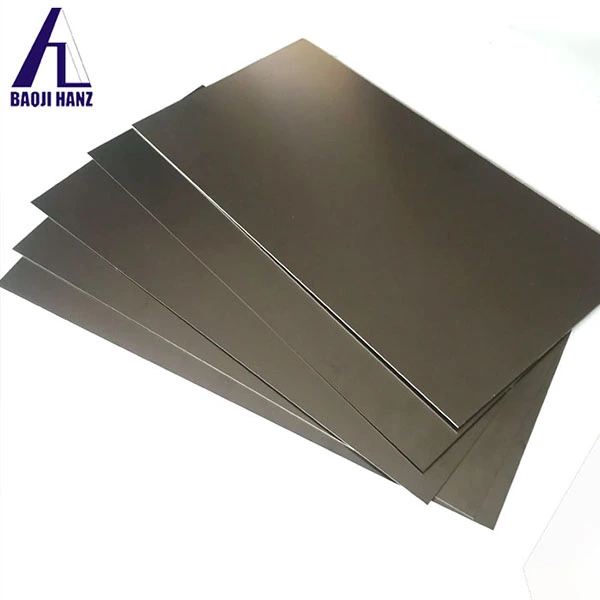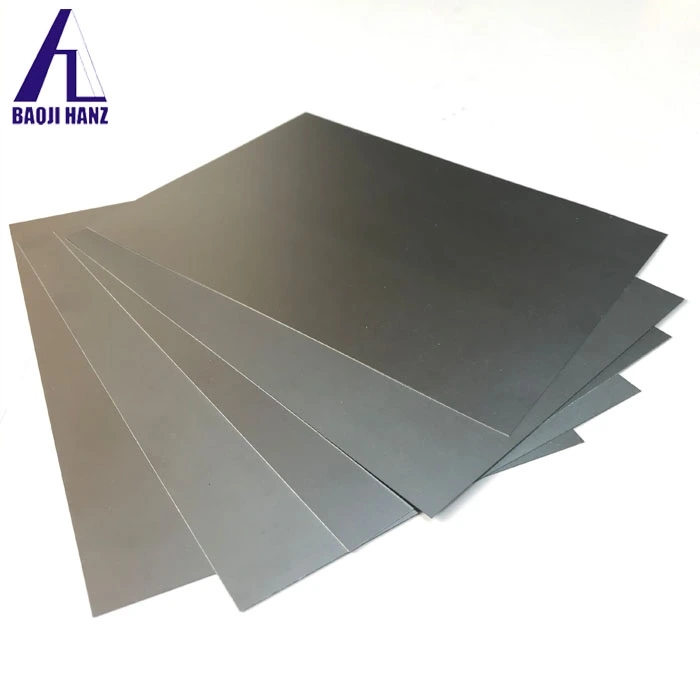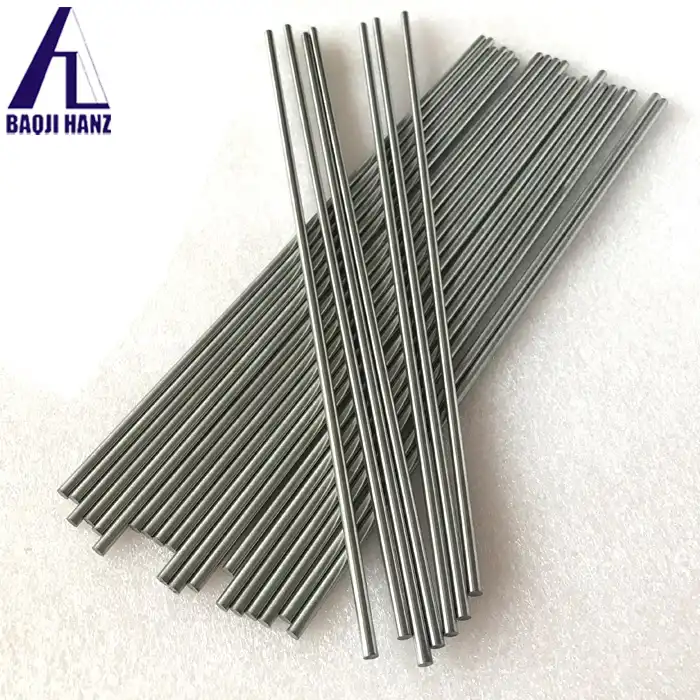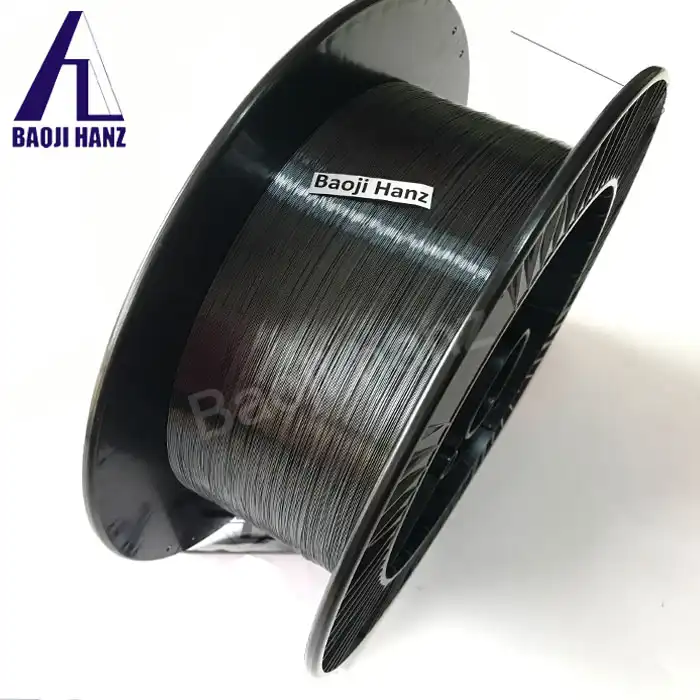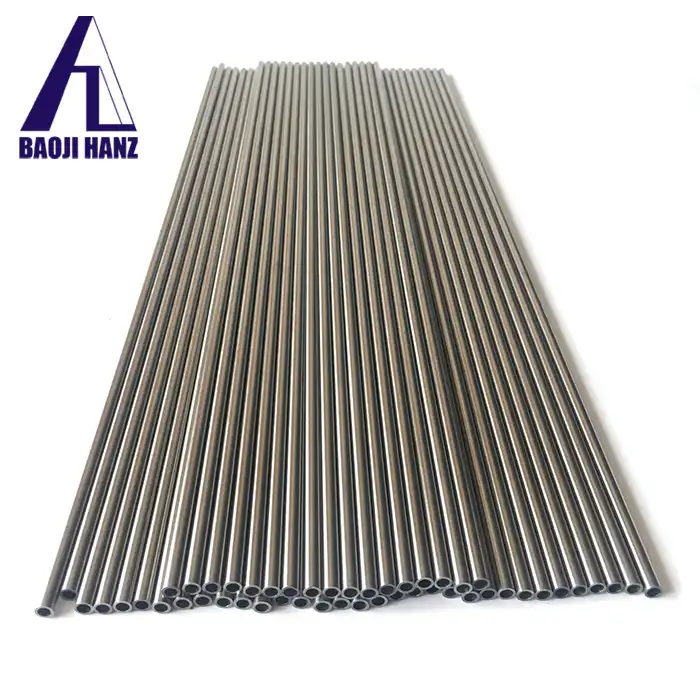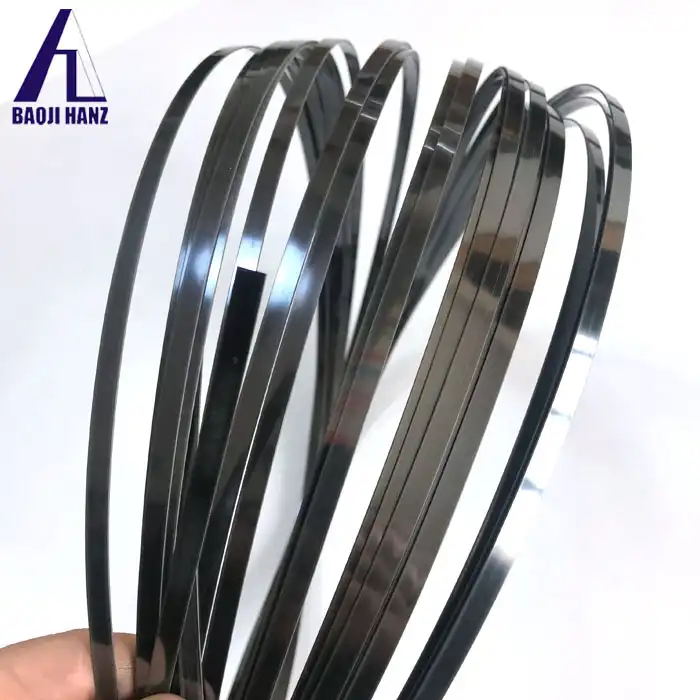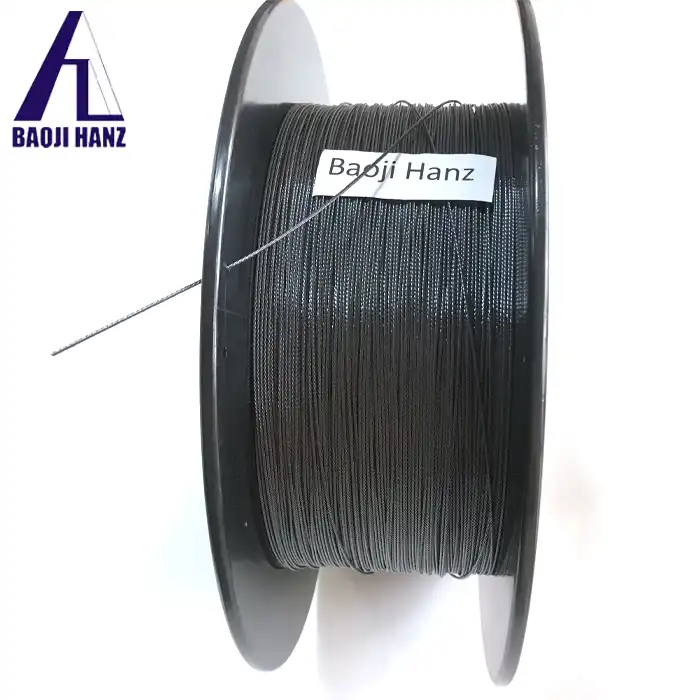What is a nickel titanium strip used for?
2025-02-24 16:10:30
Nickel titanium strips, also known as Nitinol strips, are versatile components with a wide range of applications across various industries. These remarkable alloys possess unique properties that make them invaluable in fields such as medical technology, aerospace, automotive, and consumer electronics. Nickel titanium strips are primarily used for their shape memory effect and superelastic behavior, which allow them to return to their original shape after being deformed. This characteristic makes them ideal for creating actuators, sensors, and components that require precise and repeatable movements. In the medical field,it is utilized in the production of stents, guidewires, and orthodontic archwires. Their biocompatibility and ability to conform to body temperatures make them perfect for minimally invasive procedures. In aerospace and automotive industries, these strips find applications in vibration damping, sealing mechanisms, and thermal management systems. Additionally, consumer electronics benefit from nickel titanium strips in the form of flexible antennas, microelectromechanical systems (MEMS), and impact-resistant casings. The unique combination of strength, flexibility, and shape memory properties makes nickel titanium strips an essential material in the development of innovative technologies across multiple sectors.
Properties and Characteristics of Nickel Titanium Strips
Shape Memory Effect
The shape memory effect is one of the most remarkable properties of nickel titanium strips. This phenomenon allows the material to "remember" its original shape and return to it when heated above a specific transformation temperature. The shape memory effect occurs due to a reversible solid-state phase transformation between two crystal structures: austenite and martensite. When the strip is deformed at a lower temperature, it remains in the martensite phase. Upon heating, it transforms back to the austenite phase, recovering its original shape. This unique ability enables the creation of compact actuators and smart materials that can perform complex movements with minimal energy input.
Superelasticity
Superelasticity, also known as pseudoelasticity, is another crucial characteristic of nickel titanium strips. This property allows the material to undergo large elastic deformations without permanent damage. Superelastic nickel titanium strips can be strained up to 10 times more than ordinary spring steels without plastically deforming. This exceptional elasticity is due to the stress-induced transformation between the austenite and martensite phases. When stress is applied, the material transforms from austenite to martensite, accommodating the strain. Upon removing the stress, it reverts to the austenite phase, recovering its original shape. This property is particularly valuable in applications requiring high flexibility and durability, such as orthodontic wires and medical guidewires.
Biocompatibility and Corrosion Resistance
Nickel titanium strips exhibit excellent biocompatibility, making them suitable for various medical applications. The alloy forms a stable titanium oxide layer on its surface, which provides resistance to corrosion and prevents the release of nickel ions into the body. This protective layer also contributes to the material's high wear resistance and durability. The biocompatibility of it has led to their widespread use in implantable medical devices, such as stents, bone plates, and orthodontic appliances. Additionally, their corrosion resistance makes them ideal for applications in harsh environments, including marine and chemical processing industries.
Applications of Nickel Titanium Strips in Various Industries
Medical and Dental Applications
The medical industry has embraced nickel titanium strips for their unique properties, leading to numerous innovative applications. In cardiovascular medicine, these strips are used to create self-expanding stents that can be compressed for insertion into blood vessels and then expand to their original shape once in place. This minimally invasive approach reduces trauma and improves patient outcomes. Orthodontics has also benefited from it, which are used to create archwires that apply constant, gentle force to move teeth effectively. In endodontics, nickel titanium files are used for root canal treatments, offering improved flexibility and resistance to cyclic fatigue compared to traditional stainless steel instruments. The shape memory effect of these strips is also utilized in orthopedic implants, allowing for the development of bone plates that can change shape in response to body temperature, promoting better bone alignment and healing.
Aerospace and Automotive Engineering
The aerospace and automotive industries leverage the unique properties of nickel titanium strips to enhance performance and efficiency. In aircraft design, these strips are used in variable geometry chevrons for jet engine noise reduction. The shape memory effect allows the chevrons to adjust their shape based on flight conditions, optimizing engine performance and noise reduction. It also find applications in vibration damping systems for both aircraft and vehicles, improving ride comfort and reducing structural fatigue. In automotive engineering, these strips are used in thermostatic control valves, allowing for precise temperature regulation in engine cooling systems. The superelastic properties of it are also exploited in impact absorption systems, enhancing vehicle safety by providing controlled deformation and energy dissipation during collisions.
Consumer Electronics and Robotics
The consumer electronics and robotics sectors have found innovative uses for nickel titanium strips. In smartphones and tablets, these strips are employed in compact actuators for camera focusing mechanisms and haptic feedback systems. The shape memory effect allows for precise, repeatable movements in small form factors. Nickel titanium strips are also used in flexible antennas for wearable devices, providing durability and conformability to body contours. In robotics, these strips enable the development of compliant mechanisms and soft robotics applications. Their superelastic properties allow for the creation of flexible joints and grippers that can adapt to various object shapes without the need for complex control systems. Additionally, the shape memory effect is utilized in self-assembling structures and deployable mechanisms for space applications, where compact storage and reliable deployment are critical.
Manufacturing Processes and Quality Control of Nickel Titanium Strips
Alloy Composition and Melting Techniques
The production of high-quality nickel titanium strips begins with precise control of the alloy composition. The ratio of nickel to titanium is critical in determining the final properties of the material, including its transformation temperatures and mechanical behavior. Typically, the alloy consists of approximately 55% nickel and 45% titanium by weight, with slight variations depending on the desired characteristics. The melting process is carried out using vacuum induction melting (VIM) or vacuum arc remelting (VAR) techniques to ensure high purity and homogeneity of the alloy. These vacuum-based methods prevent contamination from atmospheric gases and minimize the formation of impurities that could affect the material's performance. Multiple remelting cycles may be employed to further improve the alloy's uniformity and reduce the presence of inclusions.
Thermomechanical Processing and Heat Treatment
After the initial melting and casting, nickel titanium ingots undergo a series of thermomechanical processing steps to achieve the desired strip form and properties. The process typically involves hot forging, hot rolling, and cold rolling stages. Hot working is performed above the recrystallization temperature to break down the as-cast structure and improve the material's ductility. Subsequent cold rolling operations are used to achieve the final thickness and surface finish of the strips. Throughout this process, intermediate annealing treatments are applied to relieve internal stresses and maintain workability. The final heat treatment is crucial in setting the shape memory and superelastic properties of the nickel titanium strips. This treatment, often referred to as "shape setting," involves heating the material to a specific temperature for a controlled duration, followed by rapid cooling. The precise parameters of this heat treatment are tailored to achieve the desired transformation temperatures and mechanical responses for specific applications.
Quality Assurance and Testing Procedures
Ensuring the consistent performance of nickel titanium strips requires rigorous quality control measures throughout the manufacturing process. Non-destructive testing techniques, such as eddy current testing and ultrasonic inspection, are employed to detect any internal defects or inhomogeneities in the material. Surface quality is assessed using visual inspection and profilometry to ensure uniformity and absence of defects that could impact performance. Mechanical testing, including tensile tests and cyclic loading tests, is performed to verify the strength, elongation, and fatigue resistance of the strips. Differential scanning calorimetry (DSC) is used to characterize the transformation temperatures and enthalpies associated with the phase transitions. For medical applications, additional tests for biocompatibility and corrosion resistance are conducted in accordance with international standards. Advanced analytical techniques, such as X-ray diffraction (XRD) and transmission electron microscopy (TEM), may be employed to study the microstructure and phase composition of the nickel titanium strips. These comprehensive quality assurance procedures ensure that the manufactured strips meet the stringent requirements for their intended applications across various industries.
Conclusion
Nickel titanium strips have revolutionized numerous industries with their exceptional shape memory and superelastic properties. From medical devices to aerospace components, these versatile materials continue to drive innovation and improve performance across diverse applications. As research and development in this field progresses, we can expect to see even more innovative uses for it, further expanding their impact on technology and everyday life. If you want to get more information about this product, you can contact us at baojihanz-niti@hanztech.cn.
Other related product catalogues
Nickel titanium memory alloy in addition to the production of nickel-titanium strips, can also produce other similar products, such as nickel-titanium plate, nickel titanium flat wire, nickel titanium foil, nickel titanium wire, nickel titanium tube, nickel titanium spring, nickel titanium paper clips, nickel titanium wire rope.
|
|
|
|
|
|
|
|
References
1. Otsuka, K., & Ren, X. (2005). Physical metallurgy of Ti–Ni-based shape memory alloys. Progress in Materials Science, 50(5), 511-678.
2. Mohd Jani, J., Leary, M., Subic, A., & Gibson, M. A. (2014). A review of shape memory alloy research, applications and opportunities. Materials & Design, 56, 1078-1113.
3. Pelton, A. R., Stöckel, D., & Duerig, T. W. (2000). Medical uses of nitinol. Materials Science Forum, 327, 63-70.
4. Elahinia, M. H., Hashemi, M., Tabesh, M., & Bhaduri, S. B. (2012). Manufacturing and processing of NiTi implants: A review. Progress in Materials Science, 57(5), 911-946.
5. Lagoudas, D. C. (Ed.). (2008). Shape memory alloys: modeling and engineering applications. Springer Science & Business Media.
6. Miyazaki, S., Kim, H. Y., & Hosoda, H. (2006). Development and characterization of Ni-free Ti-base shape memory and superelastic alloys. Materials Science and Engineering: A, 438, 18-24.
